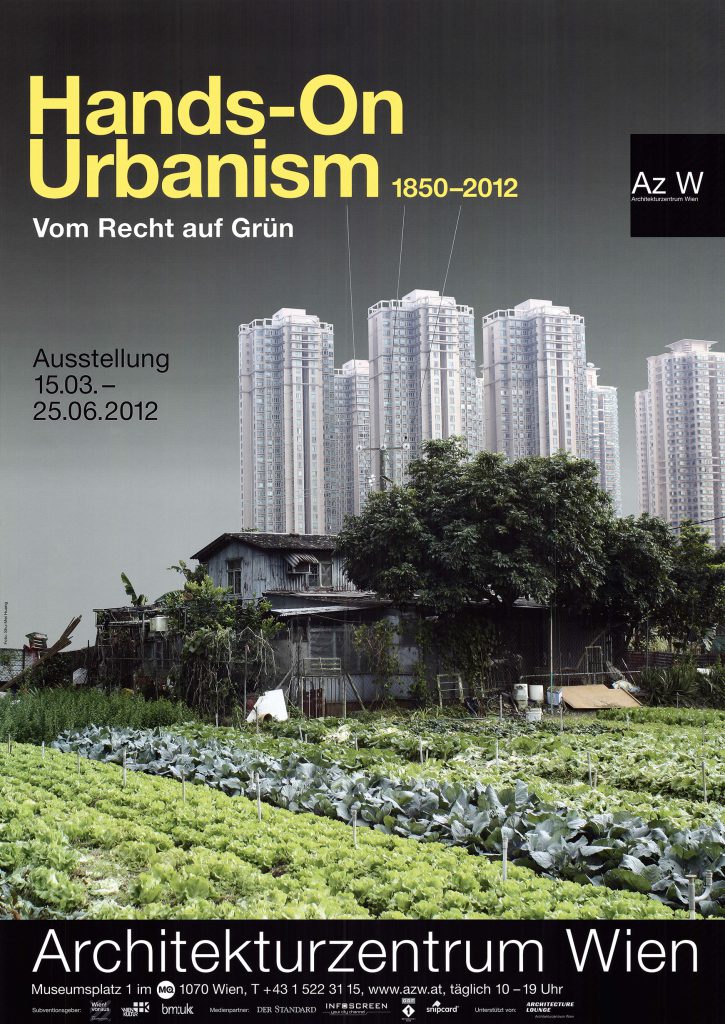Exhibition
Az W in Zagreb: Hands-On Urbanism 1850 – 2012
The Right to Green

Exhibition poster: Hands-On Urbanism 1850 - 2012
© Architekturzentrum Wien, photograph: Shu-Mei Huang, graphic design: LIGA: graphic design
The show is dedicated to the history of the idea of appropriating land in urban space. Since the shockwave of modernisation that accompanied industrialisation towns and cities worldwide have had to face some very significant challenges. City-dwellers have always found a number of solutions in crisis situations, they are involved in bottom-up urban development. Self-build and selforganisation, settlements and fruit and vegetable gardening lead to other forms of collective cohesion, neighbourliness and fair distribution. Another world can be planted, as today’s community gardeners are clearly showing.
Following many years of international research, the curator Elke Krasny presents 19 historical and contemporary case studies of bottom-up urban development in Chicago, Leipzig, Vienna, Bremen, New York, Paris, Hong Kong, Istanbul, Porto Alegre, Havana or Quito. They provide an overview of informal, self-organised collective movements and of the spaces that are created by them. The exhibition shows how decisively small projects have often led, and are still leading, to major changes.
‘Hands-On Urbanism’ introduces an alternative urban history, one that poses urgent questions about the responsibility of design for architects and planners, and the resource-logic of towns and cities. What do architects do in this process, and what can be learned from the bottom-up in this urban history? Its role ranges from initiative via activism to conducting research. How are urban planning authorities reacting to these developments? The spectrum ranges from the founding of a settlement regulatory agency, via infrastructural measures and tolerance, to measures of support from the authorities, but also the introduction of new laws and legal sanctioning in official urban plans.
curator: Elke Krasny
scenography: Alexandra Maringer
exhibition graphics: Alexander Schuh
copyright clearing: Andrea Seidling, Az W
